Hunters of Color Is on a Mission to Make the Outdoors More Accessible to Minorities — Whether the Hunting Community Is Ready or Not
After a slow morning of glassing, I’m genuinely surprised to see a group of mule deer moving across the flat below us. This wide-open country can play tricks on the eyes so I look away and then back through my binoculars before nudging the hunters seated on either side of me. I point to the biggest deer leading the group. They each nod when they see the herd.
Yasmine Hentati whispers, tentatively, that the lead deer could be a buck. I look over at Anthony Johnson, who seems even less sure about that. But any excuse to get moving is a good one, so we decide to reposition as soon as the herd moves out of sight.
It’s been tough sledding for these two new hunters and their fellow rookies, who are here in Central Washington to complete a mentorship program with Hunters of Color, a non-profit that aims to get more Black, brown, and Indigenous people into hunting. All eight mentees were here to scout and learn new skills in the spring, when the hills seemed full of deer. It’s now day three of the weeklong program, and the group has yet to spot a legal buck.
We’ve all seen more blaze orange than buckskin gray, and even the lush ag fields are devoid of antlered deer. (There are no doe tags available in this unit.) The topo map on the kitchen table back at camp is covered with optimistic sticky notes — places where we hoped to find bucks but never did. It’s sunny and much hotter than it should be for October.
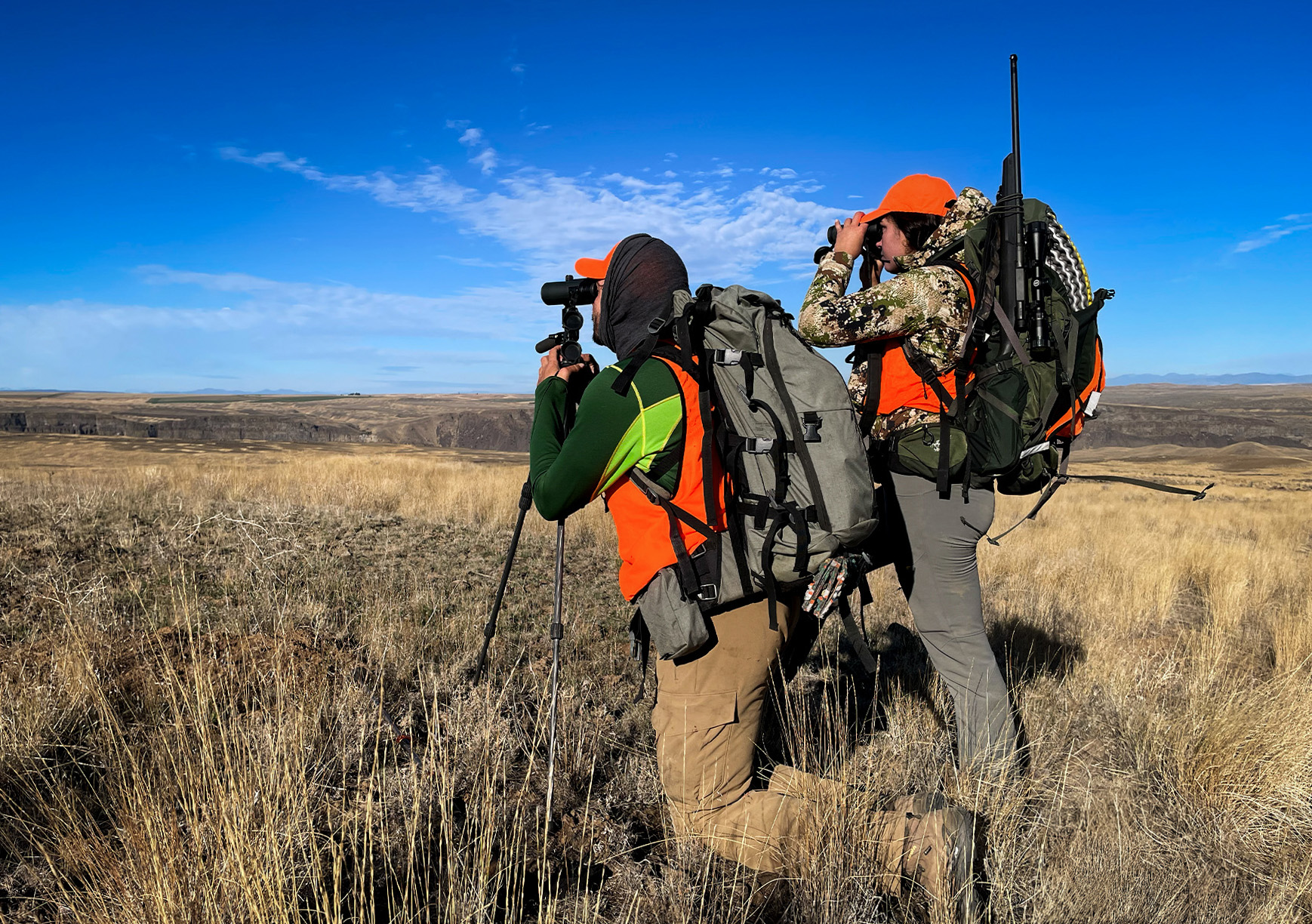
Photo by Dac Collins
Not that anyone expected this to be easy, because hunting mule deer in the desert most assuredly isn’t. But neither is HOC’s mission of fostering an outdoors community whose members reflect the demographics of the country.
“All we’re trying to do is create opportunities for those who haven’t been able to experience this lifestyle,” says HOC’s founder and executive director Jimmy Flatt. “We’re not seeking equal outcomes. We’re just trying to provide equal opportunity.”
As for our immediate opportunities, Johnson, Hentati, and I won’t see a buck this morning as we eventually confirm the herd is all does. But crouching and jogging through the sagebrush gets our blood flowing, at least, and I follow the two hunters as they move ably across the terrain, keeping to the draws and gullies to avoid skylining themselves.
I’m impressed by Johnson’s commitment to hunt as hard as possible even though he’s already tagged out. On his drive from Seattle to the HOC camp, he stopped for a two-day solo hunt in the mountains and shot a nice mule deer buck — the first deer he’s ever killed. But that doesn’t stop him from waking each morning in the dark and racking up the miles to try and help someone else get their first deer. After all, he’s here for more than just a punched tag.
Hunting for a Mentor
The urban island of Montreal isn’t the easiest place for a young Black American to pick up hunting — at least not in Michael’s experience. But the Southern California native says that aside from overcoming the language barrier and the stricter gun laws that exist in Quebec, it’s just as hard to learn how to hunt in San Jose when you don’t have anyone to show you the ropes.
“I didn’t know a single person in my sphere who hunted or was even related to anyone who hunted,” says Michael, who asked to have his last name withheld due to the sensitivity around firearms in his profession. “Eventually I got all the background checks completed [in Montreal] and I bought a shotgun. But I just felt like I couldn’t actually get into hunting because no one I knew ever hunted, and I really had nothing in common with the people in my hunter ed course.”
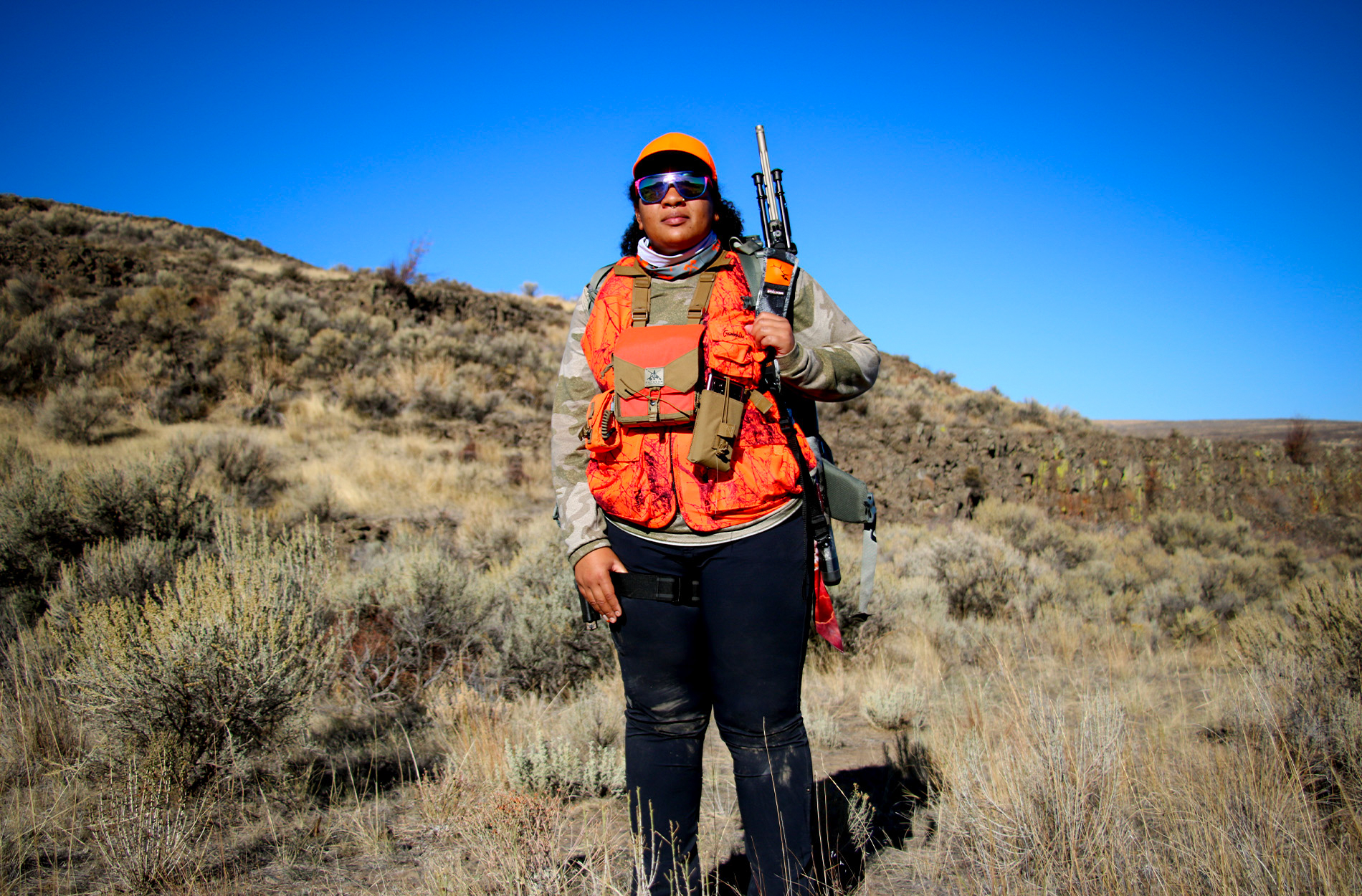
Photo by Dac Collins
Michael’s desire to hunt stuck when he moved back to the States, and in 2022, after he literally Googled the phrase “hunters of color,” he met Malcolm Legette, the ambassador for HOC’s Washington State chapter. (The organization has established chapters in 14 states since its founding in 2020, with members in 47 different states.) That summer, Michael harvested his first salmon while fishing with Legette on the Duwamish River. The following spring, Legette helped him tag his first gobbler.
“It was a life-changing experience at a time when I wasn’t really having that many new experiences,” Michael says. “And it was kind of powerful. Like, when you’re hunting, you’re excited, you’re chasing something. And then when it’s on the ground taking its last breath, you’re like, ‘Oh, I did that.’”
Most of the other mentees expressed a similar detachment from hunting during their formative years. Hentati, a wildlife biologist and PhD candidate who grew up outside Washington D.C., says she’d long viewed hunting as an unethical way to interact with the natural world. Studying wildlife ecology in college helped her make the connection between hunting and conservation. And by the time she started watching MeatEater in 2020, Hentati was officially hunting-curious. She drew a buck tag in the Cascade Range that fall and got her ass kicked in the best way possible.
“It was definitely a gateway drug, and I thought, ‘Maybe this is something that I need to act on.’ It was just so intimidating,” says Hentati. “I was like, ‘I really want to do this stuff,’ but I didn’t know what to do.”
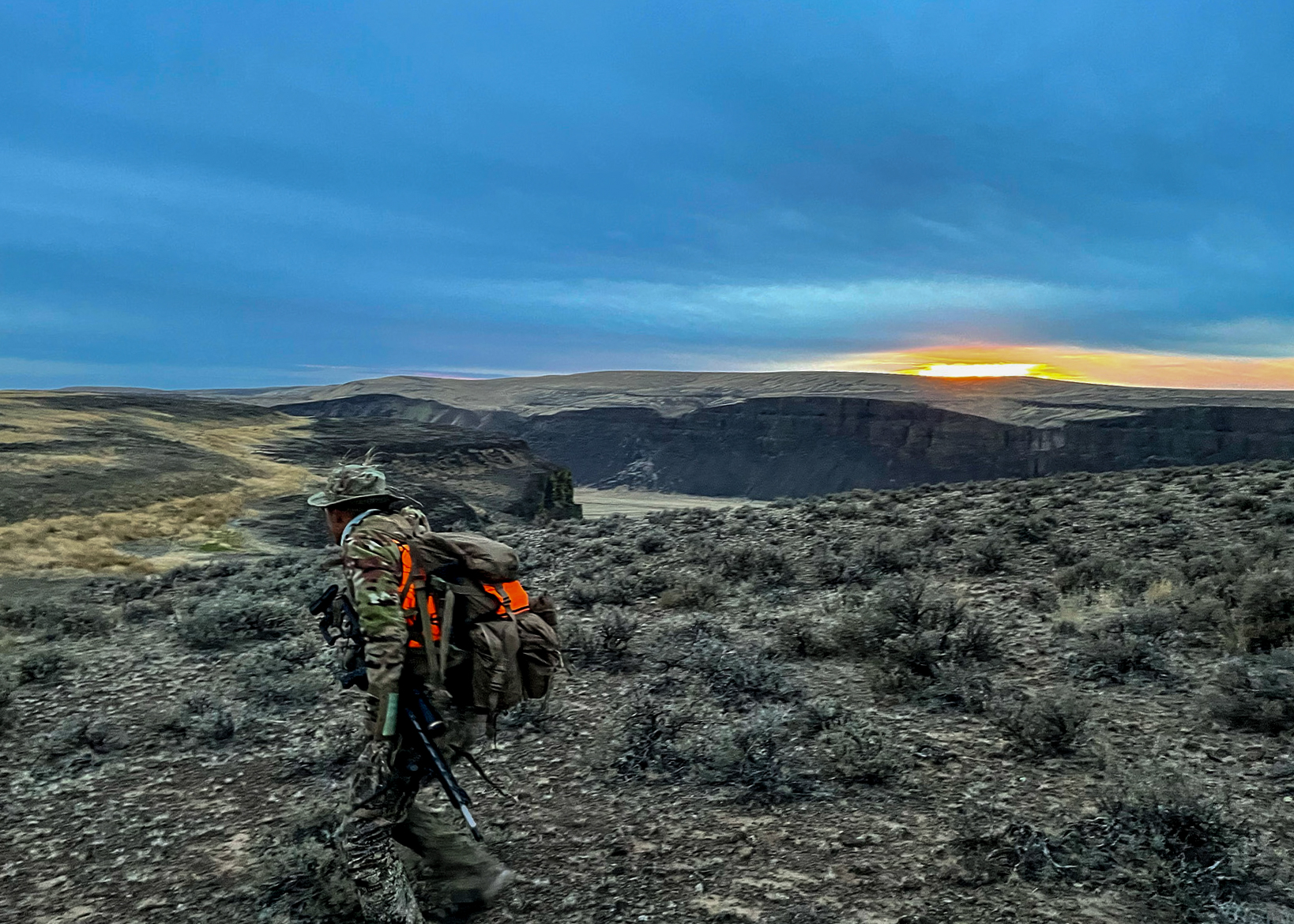
Photo by Dac Collins
Even Johnson — who was officially crowned star student after showing up to camp with a buck in the back of his Subaru — lacked a real mentor growing up in the Twin Cities. A member of the Red Lake Nation, his connection to his tribe’s rich hunting heritage was severed long before he was born.
“I present as kind of a white-passing person, and I’ve always loved that duality of being both white and Native. But I didn’t really feel like I fit in with the [mainstream] hunting culture that exists today,” Johnson says. “I really wanted to carve my own path into hunting and use it as a means of connecting with my food and culture.”
A Need for a New Kind of Hunting Org
Flatt, HOC’s cofounder, was raised by a Venezuelan mother and a Pacific islander father who taught him to hunt as a kid. Growing up, he would try to get his Black and brown friends in Northern California to go hunting with him and his dad. “We don’t do that,” or “that stuff is for white guys,” were the most common responses he got.
As he grew older, his love for the sport only increased. He always had his dad to chase ducks, elk, and turkeys with. Until he went to Oregon State to play baseball and study engineering, and then suddenly he didn’t. He was also reminded during his college years of the answers he got when he tried recruiting his friends as a kid.

Photo courtesy HOC
Flatt was experiencing what U.S. Fish and Wildlife Service surveys clearly illustrate — that the vast majority of hunters in America are white. In the USFWS’ 2016 survey, 97 percent identified as white. Its more recent survey from 2022 shows some change in these demographics, with roughly 76 percent of respondents identifying as white. But these numbers still don’t accurately reflect the racial breakdown of today’s U.S. population, which is roughly 58 percent white, according to the U.S. Census Bureau.
Flatt would eventually find a kindred spirit in Thomas Tyner, a star running back at Oregon State who got hooked on hunting after one of his coaches took him out. But Tyner faced some of the same struggles as he tried to expand his own circle in the outdoors.
“I just wanted some buddies to go hunting with,” Flatt says about his earliest dreams to start a group like HOC. That seed of a dream, which was nurtured by Tyner during college, would eventually sprout with help from Lydia Parker, Flatt’s fiancé.
The former executive director and a cofounder of Hunters of Color, Parker is a member of the Walker Mohawk Band of the Six Nations of the Grand River. She’s also an adult-onset hunter who didn’t pick up a gun or a bow until she met Flatt at Oregon State. Parker now considers herself the original proof of concept for the organization, whose motto is “the Outdoors are for Everyone.”
Flatt is keenly aware that there are plenty of other hunting mentorship programs. The problem with many of them, he says, is that they tend to underestimate how much a rank beginner has to learn and digest in order to find success and stick with it. So, HOC breaks up its programs into two blocks.
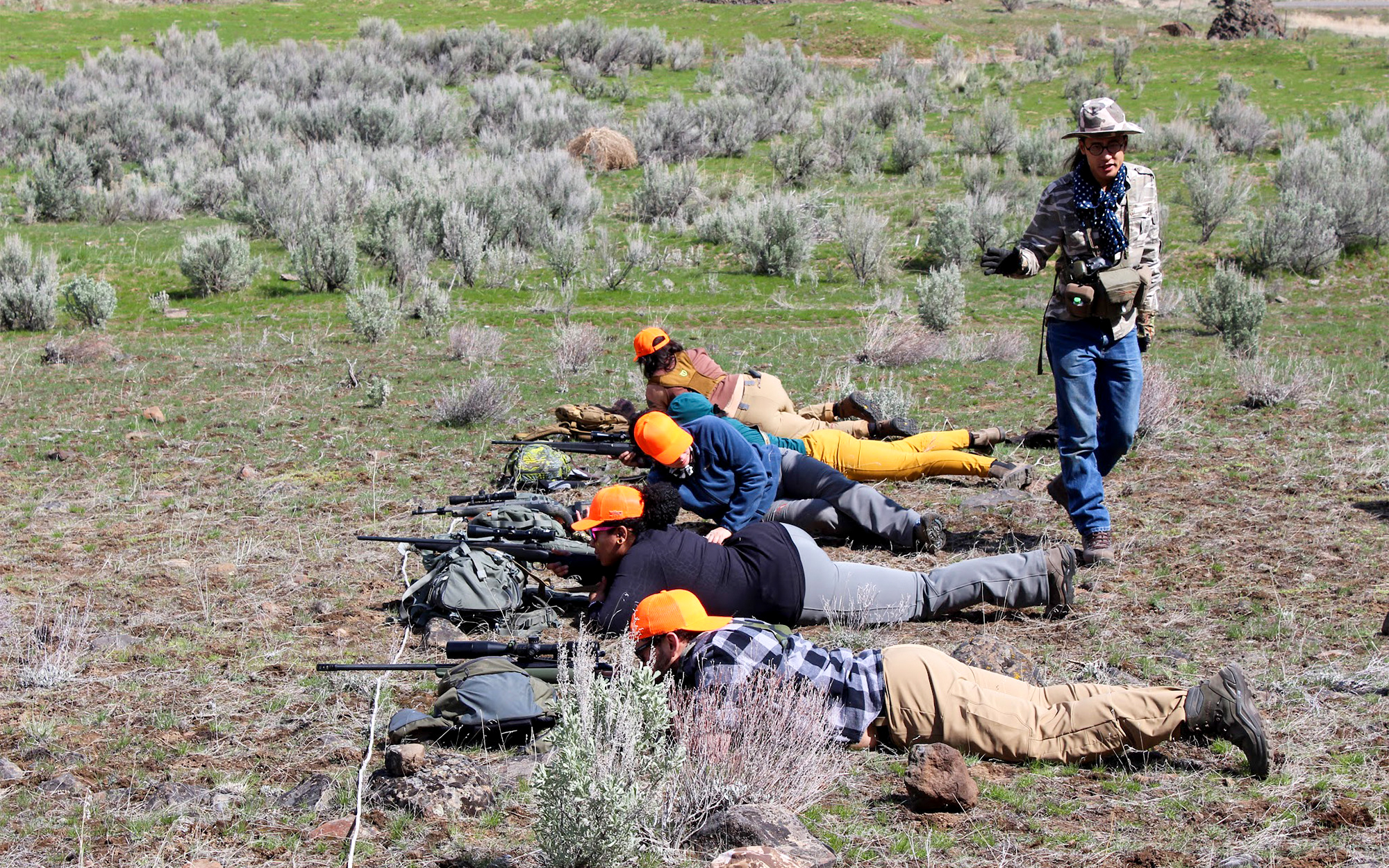
Photo courtesy HOC
For the Western big-game program, the group meets in the spring for a week to focus on education. It’s not until the fall, after they’ve spent the summer honing their skills, that the mentees really get after it. And even then, Flatt says, “the taking comes last.”
He explains that the group always incorporates an element of conservation work into the program to establish the principle of giving back to the land before you take anything from it. (During the program in Washington, we spent an afternoon pulling down old barbed wire fences with the Nature Conservancy.)
By this point, the theory goes, the mentees will have prepared themselves enough to confidently hunt in earnest. But the real value in spending so much effort preparing is that it gives the participants time to establish a group of peers. Not only do they have experienced mentors who they can look to for answers, they also have at least one of what Flatt had always longed for: a hunting buddy.
Barriers to Becoming a Hunter
Back at camp that afternoon, Flatt seems a little anxious. As the group leader and the main coordinator of this event, he’s hopeful that at least some of the mentees can fill their tags.
Finding game isn’t normally the hardest part of running this program, Flatt explains. One of the main challenges is recruiting enough experienced mentors to satisfy the overwhelming demand they’ve gotten. He says they had to choose between 91 applicants to fill the eight spots available for this particular hunt.
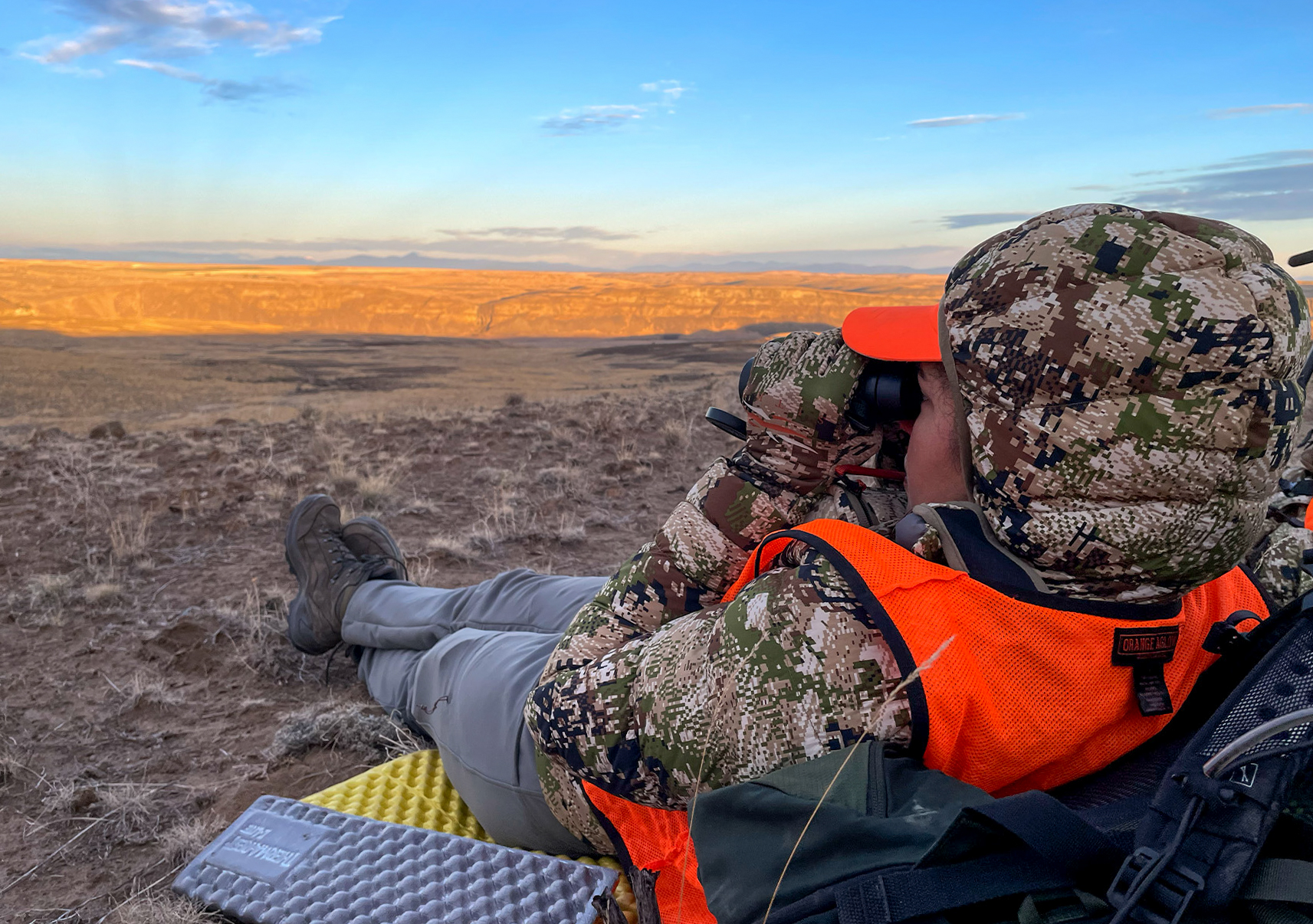
Photo by Dac Collins
Most of these aspiring hunters don’t know where else to begin. They look at the larger outdoors community (again, overwhelmingly white and predominantly male) and they see more barriers than entry points. What those barriers look like depends on the individual and their life experiences. For example, Flatt says he’s worked with mentees who’ve felt uncomfortable carrying a gun on public land. He’s also gotten pushback from some white hunters when he brings this up.
“One of the things that we’ve always heard when we talk about these things is: ‘Where’s the data Where’s the proof?’” Flatt says. “So, we did a study.”
Led by researchers at Clemson University, Baylor University, and the Wildlife Management Institute, the study attempted to identify the real and perceived barriers facing people of color by asking more than 1,200 Black American hunters about their experiences in the sport. The majority of respondents were from the South, and around 28 percent said they’d either encountered or witnessed some type of race-related incident while hunting. These ranged from strange looks and racial epithets to physical threats and violence.
Read Next: Why We’re Failing to Recruit African American Hunters (and How to Fix It)
The authors concede that the study doesn’t offer a full picture of the challenges facing would-be hunters of color because their pool of respondents was limited to Black hunters who had hunting licenses — it didn’t include people who’d never bought one. When respondents identified what might limit their hunting in the future, a common response was the lack of a network of hunters they could identify with.
“Participants demonstrated a clear hunger to be part of a like-minded community, whether that be in a casual setting or as part of an organization or club that includes Black hunters,” the authors write. More than a third of respondents said “individual mentoring” was their preferred strategy for encouraging more Black hunters to participate, and this strategy ranked No. 1 overall.
Some minorities who hunt, especially those in the South, have a deep-seated distrust of white hunters and the groups that represent them, and Flatt says the study published in April helps quantify those feelings of unwelcomeness. He’s also heard from white hunters who’ve accused HOC of “reverse racism” — the idea that addressing racial inequality leads to disadvantages for those in the majority.
Flatt emphasizes that even though HOC’s mission is focused on people of color, the group isn’t trying to exclude white hunters or tear down traditions. Neither is it afraid to point out the racial divides that persist in modern American hunting culture.
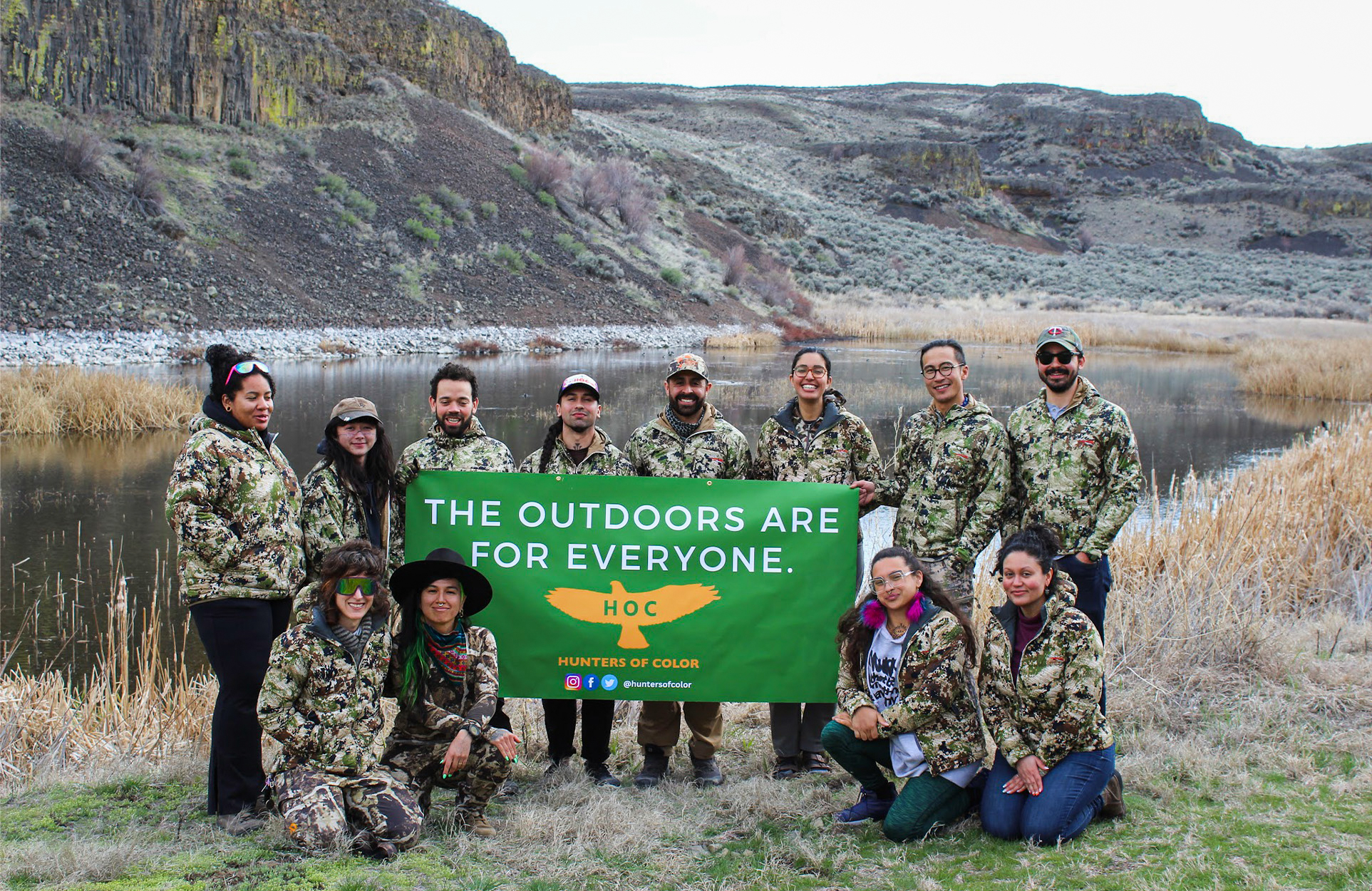
Photo courtesy HOC
HOC isn’t the only group in the hunting industry to pick up on this cultural dissonance. Several companies, including Sitka Gear, Weatherby, onX, and Lowa Boots have sponsored HOC’s mentorship programs.
“Access has been a core value at onX since our inception, and ultimately, access to opportunity is a part of that,” onX general manager Cliff Cancelosi tells OL in an email. “We are proud to support Hunters of Color’s mission in ensuring people from diverse backgrounds start from a solid foundation in their hunting journey.”
These brands recognize the financial barriers facing all new hunters, regardless of race, and they’ve helped lower that hurdle by offering financial and product support.
“There is a significant gap in participation for people of color in the hunting and conservation communities, and HOC’s mentorship programs welcome over a thousand new hunters annually,” Sitka’s director of conservation and marketing Lindsey Davis tells OL in an email. “Their work addresses recruitment that is critical for the future of hunting and conservation.”
“To me, it’s simple. We want more people advocating for this thing that we love.”
Jimmy Flatt
Flatt says the group has also gotten support from several conservation non-profits. Along with the Nature Conservancy, which allowed us to hunt their land in Central Washington, Backcountry Hunters and Anglers and the National Deer Association have partnered with HOC to host mentorship programs targeting under-represented communities. NDA director of hunting Hank Forester says these programs have become a key focus of the nationwide R3 movement (the push to recruit, retain, and reactivate hunters) as it evolves in the 21st century.
“A lot of modern R3 thinking and importance has been put on diversifying the hunting population. One of the main reasons people don’t hunt is because they didn’t grow up around it, and that’s especially true for urbanites and minorities,” Forester says. “But the future of hunting and conservation in America is going to be driven, in part, by those urban populations. We need to continue to spread the word, to invite others, to create advocates, and to even just create understanding.”
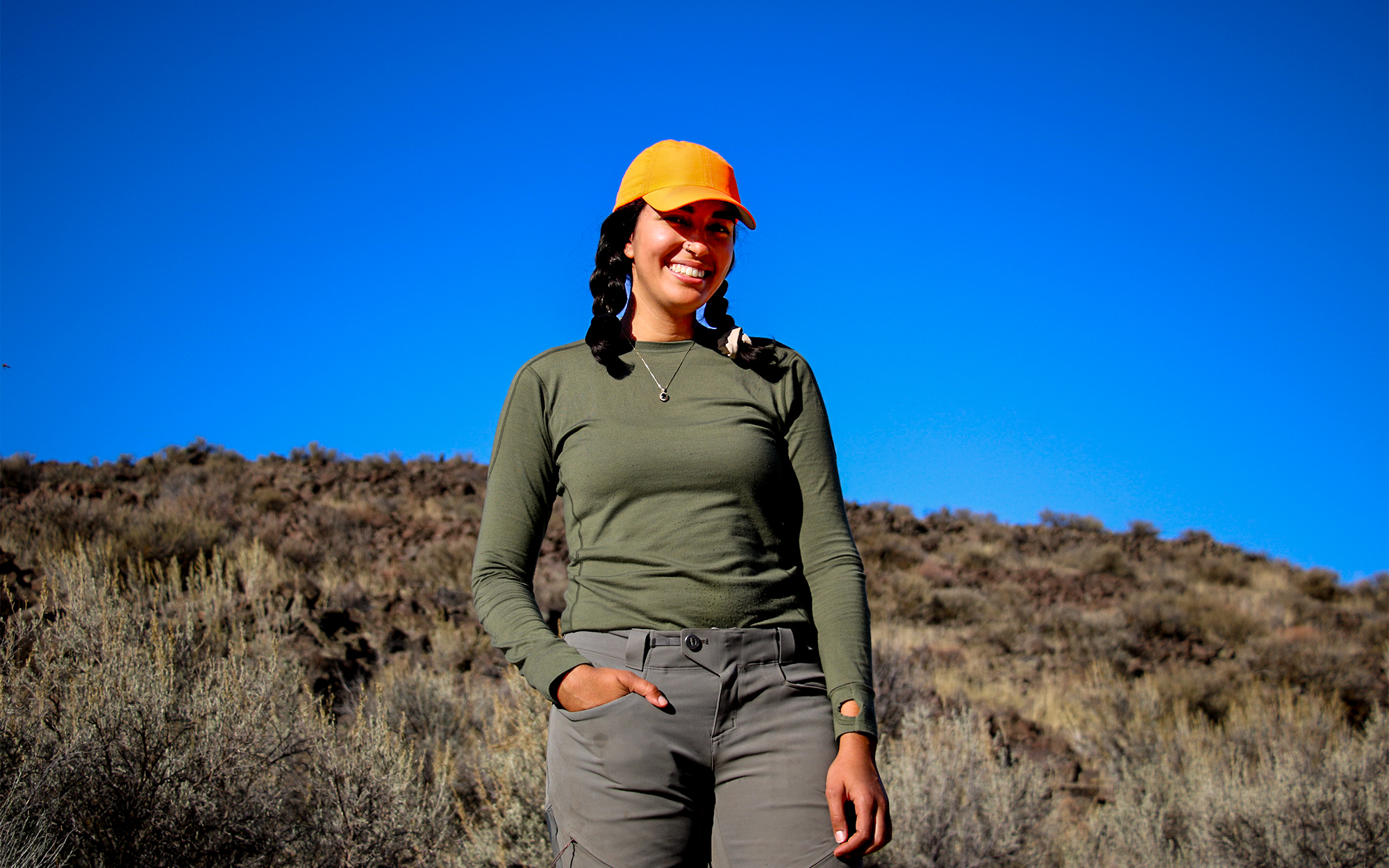
Photo by Dac Collins
Because it’s been hard to recruit enough minority mentors to satisfy the demand, Flatt says HOC has always leaned on white mentors to fill the gaps. He also recognizes that if the group’s end goal is to foster inclusivity, it’s also their responsibility to lead by example.
“We need to correct this connotation that white people are the problem, or that Black and brown people are trying to take their opportunities away,” Flatt says. “To me, it’s simple. We want more people advocating for this thing that we love.”
One of the challenges that’s difficult to articulate is that when a group like HOC brings race to the forefront, white outdoorsmen tend to get hung up on their own insecurities. I found myself struggling with this during the mentored hunt. One night, while sitting across the table from Flatt with a bottle of single malt between us, I finally worked up the nerve to share what had been weighing on my mind.
When I was driving to camp, and even when I sat down for dinner the first night, I was painfully self-conscious. I was never treated like an outsider, I told him, but I couldn’t help thinking how ridiculous it must seem for a white dude like me to be here photographing, interviewing, and writing about the group. To put it plainly, I felt like I didn’t belong.
“Man, I’m sorry to hear that. But I also want you to think back and try to remember that feeling,” Flatt said. “Because that’s how I’ve felt in pretty much every hunting camp I’ve ever stepped foot in.”
Heritages Lost, and Hunters Found
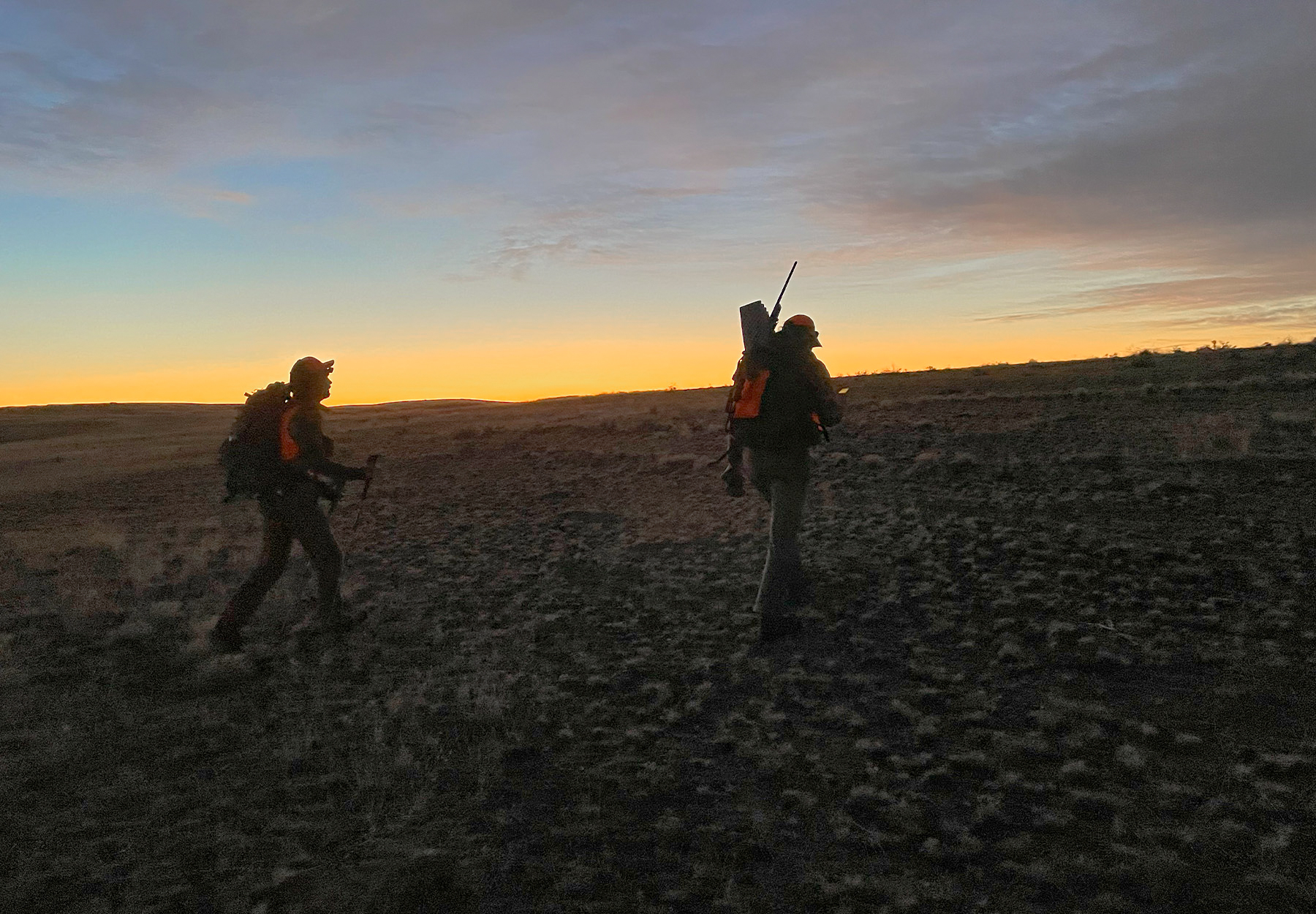
Photo by Dac Collins
The morning after we spotted the group of does, Johnson, Hentati, and I return to the same location with Ryan, another mentee. (He asked that we use a pseudonym instead of his actual name over concerns of harassment.) A tattoo artist from Portland who has the words “Cry Baby” inked across his knuckles, Ryan also lived on the streets of Honolulu for a time.
In geographical terms, the Hawaiian city is the closest he’s ever been to his familial homelands. Ryan’s grandparents defected from North Korea during the Korean War, and his family has never returned to the mountains where their ancestors hunted Sika deer and other game for centuries.
“It’s weird because just stepping foot into this world, I feel like I’m leaning into this thing that somebody else before me was doing at some point,” Ryan says. “And that second-hand knowledge is still there, but it’s also a privilege, right? To have access to these cultural lifeways. And then, for whatever reason — because of war or something else — you’re totally removed from that.”
Before finding HOC, Ryan made a concerted effort to re-enter that world on his own. He’s been on a yearslong quest to kill a blacktail — one that was nearly fulfilled in 2022, when he got a shot opportunity during a solo hunt with a borrowed rifle.

Photo by Dac Collins
“I couldn’t pull the trigger,” Ryan says. “I think it was because I was alone. But I was just — scared.”
Sometime around midday, as the four of us head to our next glassing point, we spot a pair of hunters on a faraway ridge. We stay our course and eventually they drop into another drainage and out of sight. I don’t think much of it at the time, but it’s only our strength in numbers that keeps Ryan from turning around. As a trans person who looks different than most hunters, he’s wary of strangers when out in the field.
“If I was in that situation and hunting by myself, I would be very worried about the guys on that ridge,” Ryan says later that evening. “In the back of your mind, things that might not be very probable become possible … and I don’t know. It just makes me nervous.”
Read Next: Hunting Without a Mentor for the First Time Is Hard—So Adjust Your Expectations
Clearing the next rise, we see a lone coyote running full-tilt over the open ground. Hentati tracks it with her binos until it disappears into the brush, while Johnson cracks a joke about the “big nasty buck” it must’ve smelled. Ryan laughs, all traces of fear now gone.
And not long after the mentorship program ends, Ryan will return to Oregon’s Coast Range with another blacktail tag. Hunting alone with his own rifle, he’ll get another opportunity on a shooter buck. Only this time, he’ll make it count.
When Cultures Clash
Flatt and the other HOC mentors will be the first to acknowledge that they aren’t the only ones working to promote equal opportunity in the outdoors. Along with BHA and NDA, organizations like Outdoor Afro, Minority Outdoor Alliance, and Artemis Sportswomen are helping educate more women and minorities about hunting, while projects like Black Duck Revival and the Black Heritage Hunt give these hunters a place to gather, swap stories, and learn from one another.
There are, however, some people and established groups who are hesitant to support these changes. Some folks would describe what HOC is doing as “woke-ism” and say there’s no need for it in hunting. (Flatt says that HOC has been accused at times of being too argumentative or “problematic” when discussing race-related topics.) On the flipside, there are many large national groups and powerful individuals who work every day for diversity, equity, and inclusion in their respective fields, but who despise the idea of hunting and using firearms.
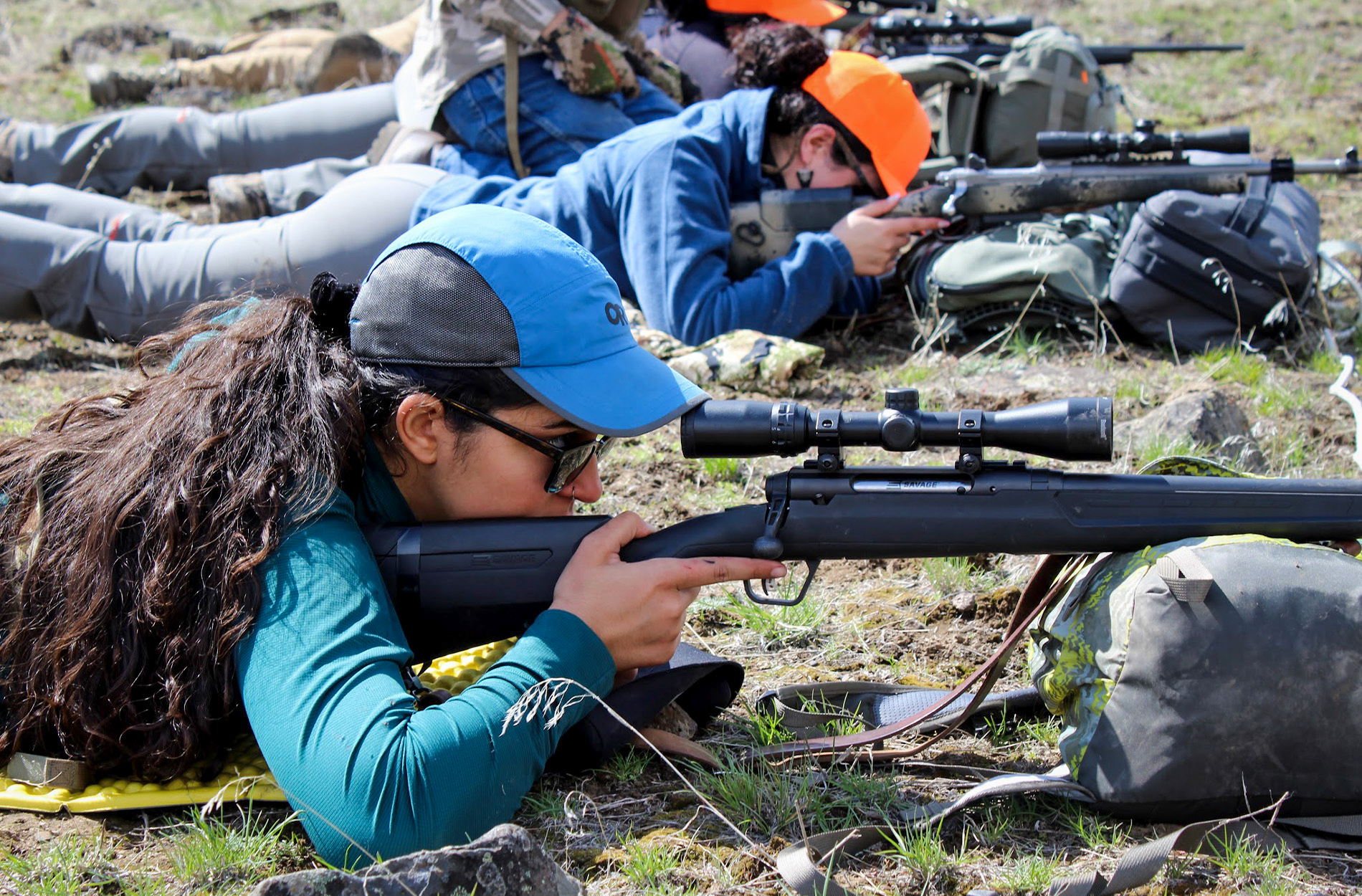
Photo courtesy HOC
This leaves people like Flatt and his cofounder Parker holding a sparsely populated middle ground in a polarized landscape. The everyday struggle to bridge these opposing worldviews is what led Parker to step down as executive director in November — or as she puts it, to “break up” with the hunting industry.
In an open letter explaining her decision to walk away from the organization she helped build, Parker talks about the challenges she faced during her short tenure as executive director. She calls out the tokenism and denial coming from certain groups in the hunting industry, and she mentions the threats she’s received from people who’ve called her an “angry Indian.” She expresses the constant disappointment of applying for grants meant to fund diversity, equity, and inclusion efforts, only to see them awarded to white-led organizations.
“I was told that the hunting community wasn’t ready for Hunters of Color. That they weren’t ready for racial equity,” Parker writes. “I hoped that person was wrong but they were right.”
It is true that some people in the hunting community weren’t quite ready for Parker’s version of HOC, as she offered some strongly worded critiques on hunting culture during her time as executive director.
“There’s a colonized mindset present prevalent [sic] in a lot of Western hunting that puts humans above nature … and that mindset allows you to dominate nature,” Parker said in an interview with Native News Online in 2022. “That’s something we’re trying to decolonize. We say we have an agreement with nature, we’ll take care of her, she’ll take care of us.”
Flatt agrees hunters can benefit from examining our relationship with nature, but he’s also taken a different approach than Parker as he tries to foster goodwill and open new opportunities rather than change existing hunters’ mindsets. Still, as HOC shifts into its next gear, Flatt remains unapologetic about the fact that the hunting community needs more people of color, whether it’s ready for them or not.
Paying It Forward
By the end of our week in Central Washington, Johnson’s tag is still the only one filled by the group of mentees, and he’ll share the meat with everyone before he drives back to the city.
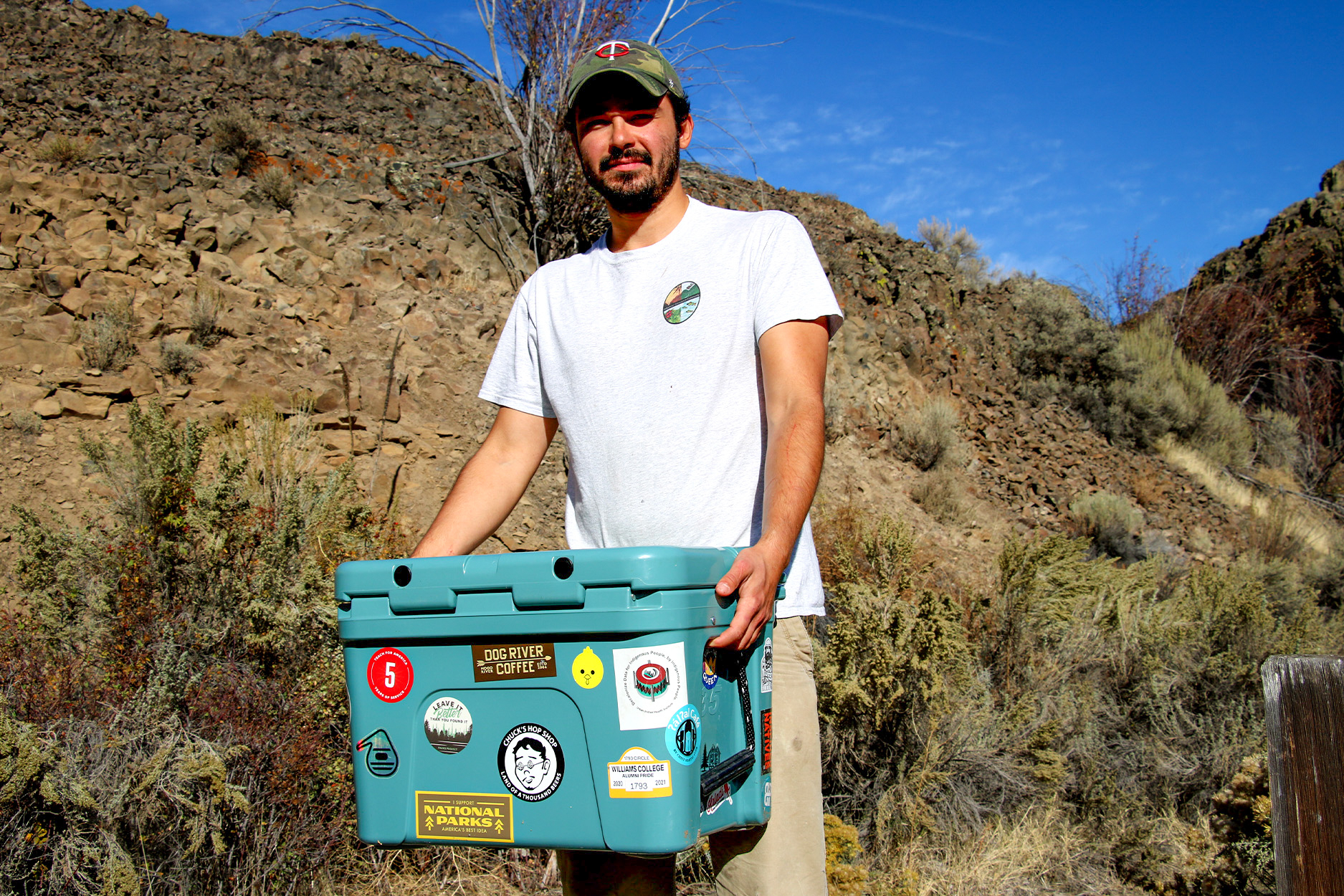
Photo by Dac Collins
It’s a simple but ancient gesture that he’ll benefit from in several ways. Aside from the gratification of sharing with newfound friends, he’ll get at least one bowl of chili from the stash of venison he gave Hentati. The two live in the same Seattle neighborhood, where they’ve been hanging out since the spring, poring over maps and planning future hunts.
“It’s quite literally all I think about,” Johnson says while packing his cooler on the last day. “For me, hunting is this physical activity where I can engage with wildlife and develop this relationship with them … We talk [in our culture] about how we’re pitiful. How I’m a hungry, pitiful Anishinaabe and I am asking you [the animal] to give yourself to me. So, I think we kind of owe it to these animals to give it everything we have and not hold back.”
The post Hunters of Color Is on a Mission to Make the Outdoors More Accessible to Minorities — Whether the Hunting Community Is Ready or Not appeared first on Outdoor Life.
Source: https://www.outdoorlife.com/hunting/hunters-of-color/




